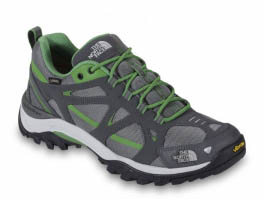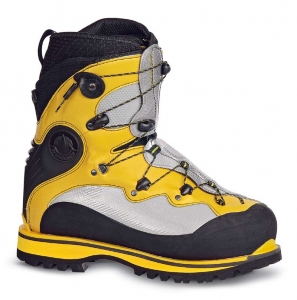Trekking shoes
When preparing for expedition, special attention should be paid to the choice of trekking boots. This point is of paramount importance. Choosing the right shoes you will create the necessary comfort on the road and it eliminates the additional problems.
There are several types of hiking boots:
• Mountain hiking shoes;
• Trekking shoes;
• Highland boots.
Mountain sport shoes
Compared to mountain trekking boots the shoes are lighter and more flexible. They are mostly used for the foothills and rugged terrain. They are not designed to carry a heavy backpack, on the rise of a large inclined plane, as it is very soft and not fixed properly foot.
Running shoes, usually made of textile combined with leather, suede or synthetic plates.
Trekking boots

Trekking boots as compared to the mountain running shoes are more universal: they are equally suitable for rough terrain and for steep climbs and descents, as well as for hiking, where the temperature does not drop below 15 degrees.
ALPINE SHOES
Suitable for multi-day hiking with a heavy backpack. They're tough and able to handle any type of terrain. Alpine boots higher and stiffer than trekking boots, they give a great foot support and a more solid foundation; have a thicker and aggressive soleplate.
Of these kinds of hiking boots trekking boots are the most versatile. When choosing them, special attention should be paid to some important details, namely:
• There is a whole leather upper parts, which gives the shoes a longer service life and reliability. Leather (or nubuck) is very durable and resistant to water and abrasion resistant material. Because of it boots will not be broken, will have minimum of external technical damage, hits, do not grind on the rocks and bunds.
• Lack of horizontal seams that can scuff relatively quickly and lead shoes in a state of disrepair.
• Toe of a boot should be strengthened rubber lining.
• The membrane is Gore-Tex. It creates an additional moisture barrier and removes excess evaporation.

• Sole. There are several options of protectors on shoes. One of the best known and most widespread - is the sole of the company Vibram. This brand is a world leader in the production of soles for mountain boots. However, in our view, it is good only in dry summer weather, because this kind of protector has poor adhesion with snow in winter and wet in summer. In any case, the sole should be thick, hard and have an aggressive pattern drawing.
• The one-piece valve on the tongue, which prevents the ingress sand inside the shoe, snow, branches, and all superfluous.
• Lacing. If the high boots, the laces in the upper part should be on the hook. It will allow quickly remove and quickly put them on. Furthermore each hook fixes the degree of tightness lace, i.e. maximum laced shoes at lower hooks, it is possible to relax a bit in the ankles (on the upper hooks) for the convenience of walking.
• Internal part of shoe should be enough soft, especially in the area of the heel and up. Particular attention should be paid to the inner seams: they do not have anywhere to stick out, otherwise they will rub.
• Comfort. When you buy trekking boots then use those socks that you plan to wear with boots. You should not feel any embarrassment of foot; fingers must be free to move and should not be clamped. Shoes should ideally sit on the foot and be maximally comfortable.
• The weight. You should choose the most lightweight shoes. They say that one extra kilogram on the feet, it is five kilos on your back. Therefore, than lighter trekking shoes then it’s more comfortable.
